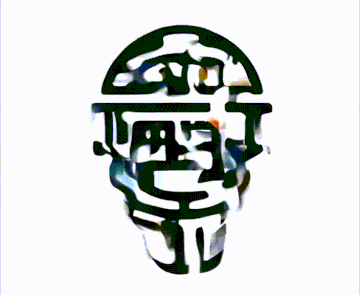
VR Goalie Training Part 2: A Foundational Revolution or a High-Tech Gimmick? By: In Part 1, we established a framework for distinguishing between a value-creating technology and a value-diminishing gimmick. A technology, whether corporeal or incorporeal, is the practical application of knowledge to create genuine, layered value. A gimmick, in contrast, fabricates the illusion of value, often by arbitrarily increasing a task's difficulty under the guise of pseudo-science. The central question remains: Where does VR goalie training fall on this spectrum? To answer this, we must dissect the system into its constituent parts: the corporeal VR headset and the incorporeal training software. By applying our established logic to each component, we can hopefully arrive at a clear conclusion. The Corporeal Platform: A Foundational Layer Let's first examine the VR headset itself, such as the Meta Quest. This is a corporeal technology, a physical device composed of screens, lenses, sensors, and processors. Does it create value? Indisputably, yes. Its purpose is to immerse a user in a virtual environment, a feat that requires the practical application of immense knowledge in fields like optics, computer engineering, and motion tracking. However, the headset's primary value isn't intrinsic; it lies in its function as a platform. On its own, a VR headset offers limited utility, much like a smartphone without apps or a computer without an operating system. Its value is defined by the additional layers of incorporeal technology (the software) that can be built upon it. It does not arbitrarily increase the difficulty of a task; rather, it provides an entirely new medium for tasks to be performed. Therefore, the VR headset is unequivocally a technology. It is a foundational layer, akin to the electrical grid that powers lightbulbs or the computing hardware that runs Linux or Microsoft Windows. Its proliferation is a prerequisite for the propagation of the software it hosts. A goalie purchasing a headset for 386,076 sats is not buying a training tool; they are buying access to a platform upon which training tools can operate. The Incorporeal Software: Augmenting Reality or Falsifying It? The real debate centers on the incorporeal software, such as SenseArena. Do these software represent a genuine technological advancement in goaltending, or is it merely a high-tech version of tying a mesh bag over one's head? Let's apply our three-point gimmick test. 1) Does it arbitrarily increase the difficulty of a task? 2) Does it require an investment? 3) Does it assert scientific credibility? The software certainly requires a financial and time investment, and its proponents claim it is based on principles of cognitive science and skill application. The critical question, for now, is the first one. Does it arbitrarily increase difficulty? Consider the white puck gimmick. Its method of increasing difficulty is subtractive; it removes the visual contrast that helps a goalie track the object. It strips away information, forcing the goalie to perform a familiar task with less data. This is akin to the driver turning off their headlights, the underlying skill of driving isn't being trained, only obscured. VR training software, conversely, is additive and transformative. It does not simply make seeing the puck harder. Instead, it creates a controlled and simulated environment where specific scenarios can be replicated with a consistency that is hard to achieve on the ice. A goalie can face the exact same situation, with the same release and trajectory of the shot, one hundred times in a few minutes. This is not an arbitrary increase in difficulty; it is a controlled manipulation of variables. It doesn't remove information; it curates it. Because, if used this way, the software does not rely on arbitrarily increasing difficulty, but rather on creating a new training context, it fails the primary test for a gimmick. It is, therefore, a technology. VR in the Hierarchy of Goalie Tech We have determined that both the headset and the software are technologies. But what is their place in the layered structure of goaltending development? Is VR training a foundational innovation on par with the concepts of the butterfly or Ian Clark’s Direction of Movement (DOM) theory? The answer is no. The DOM theory is a fundamental, first-layer technology. It is a system of logic for efficient movement that is non-negotiable for success. A goalie cannot compete at a high level without internalizing its principles. The same can be said for Forward Head Trajectory and other foundational incorporeal technologies that dictate a goalie's core approach to the position. VR training software is not a replacement for these base layers. It is a higher-layered, or application-layered, technology. Its function is not to teach a goalie the DOM theory, but to provide a tool for practicing and perfecting the application of that theory. A goalie who steps into a VR simulation without a solid understanding of such concepts is simply reinforcing poor habits—just more efficiently. While compounding strong habits leads to meaningful progress, compounding bad reps only accelerates the development of flaws. What are the consequences when inefficiency becomes ingrained? The value of VR software is built upon the foundation of proper coaching and fundamental theories. It serves as a potential supplement, not a substitute. It allows a goalie to take the incorporeal knowledge of theory and rehearse its physical application in thousands of simulated repetitions, forging stronger neural pathways. A Tool, Not a Panacea The buzz and debate surrounding VR goalie training stem from a misunderstanding of its role. Those who dismiss it as a gimmick often mistakenly view it as a proposed replacement for on-ice training and real coaching: A magic bullet to bypass the Proof of Work required. Those who hail it as a revolution may overstate its position in the hierarchy of technologies, placing it on par with the very theories it may help reinforce. The reality, as revealed by our logical framework, is more nuanced. The VR headset is a corporeal platform technology, and the training software is a potential valid incorporeal application-layer technology. It may create value by offering accessible, repeatable, and controlled training simulations that cannot be replicated as consistently in the physical world. However, its value is conditional. It is a layer built on top of the essential foundations of goaltending theory and on-ice practice. A goalie can reach the NHL without ever using VR, but they cannot do so without mastering proper Direction of Movement. The former is a tool for honing skills; the latter is the very language those skills are written in. VR goalie training is not a gimmick, but it is also not a first-layer revolution. Coming in Part 3… However, assuming the following logical framework holds true, does the current iteration of SenseArena software help goaltenders reinforce proper skill application—or does its design actually promote poor habits? If the current use of this technology fails to develop strong fundamentals and instead reinforces flawed patterns, we must ask: why is that the case and what can be done to fix it? While VR headsets and training software are, in principle, legitimate technologies, not gimmicks, the same cannot be assumed for every implementation. A poorly designed VR program can easily veer into gimmick territory. Soon, we’ll examine the strengths and shortcomings of SenseArena to determine whether it stands as a genuine technological tool, or merely a gimmick disguised as innovation. https://open.substack.com/pub/evolutiongoaltending/p/vr-goalie-training-1f2?utm_campaign=post&utm_medium=web





